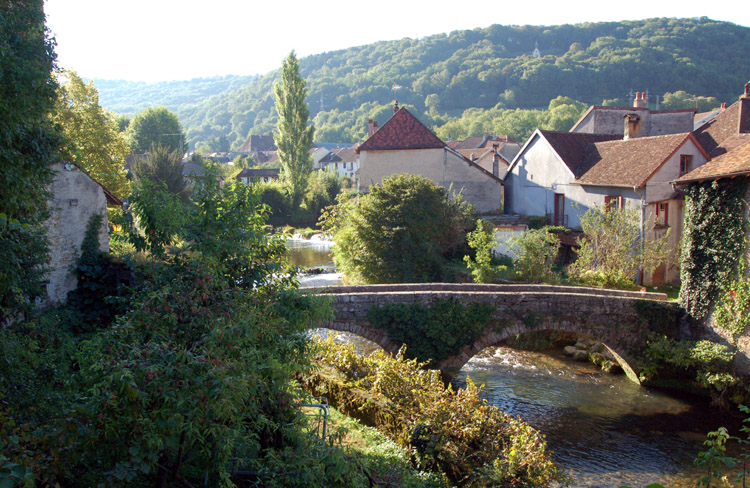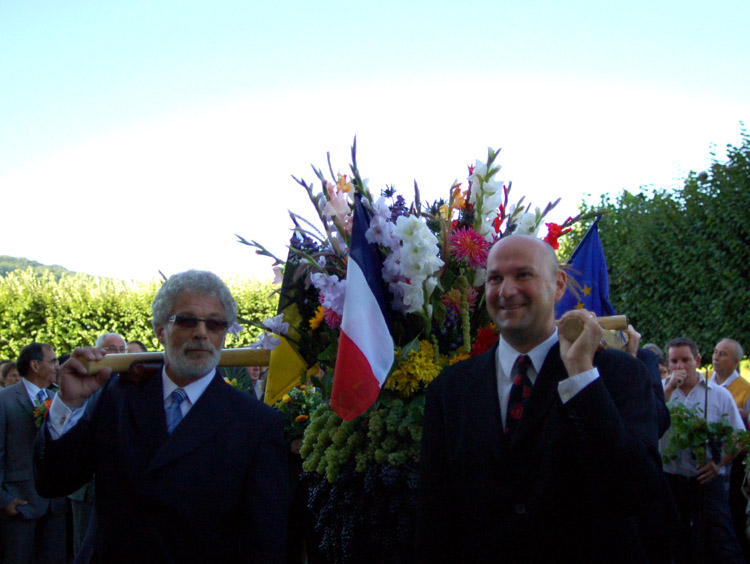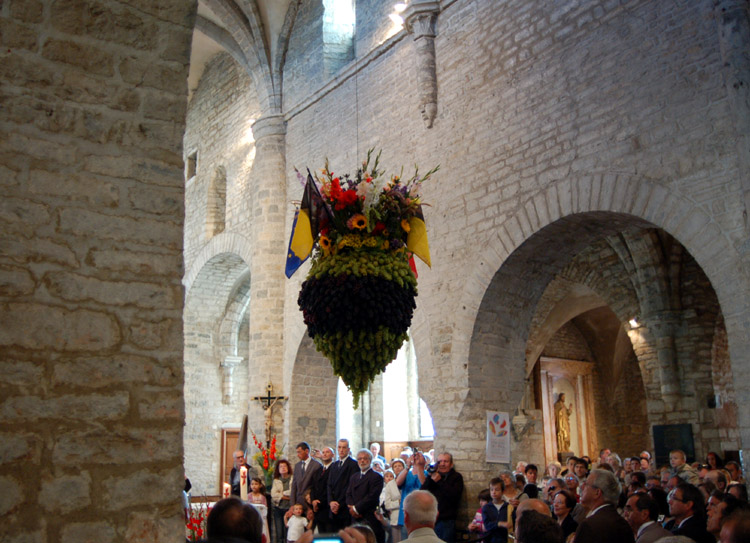One of my favorite reasons to travel is the opportunity it often affords me to step back in time and witness the traditions of a place. Last year, while traveling through France's Jura wine region, we stopped in the quaint town of Arbois during the annual event known as Le Biou, the blessing of the grapes for the harvest.
 Arbois is one of those quintessential wine towns that dot France, a cluster of medieval buildings lined with tasting rooms and Michelin-starred restaurants, rows of vines clinging to hillsides just outside the city walls. The town lives and breathes wine, especially the famous Vin Jaune, an aged "yellow wine," which only comes from the surrounding countryside. Walking its narrow streets allows you to pop into a wine shop to sample the current offerings or to stop by an epicerie for local comté cheese and cured meats. Near the center is the house where Louis Pasteur lived most of his life, now a fascinating little museum preserved as a testament to his life's work in science and winemaking.
Arbois is one of those quintessential wine towns that dot France, a cluster of medieval buildings lined with tasting rooms and Michelin-starred restaurants, rows of vines clinging to hillsides just outside the city walls. The town lives and breathes wine, especially the famous Vin Jaune, an aged "yellow wine," which only comes from the surrounding countryside. Walking its narrow streets allows you to pop into a wine shop to sample the current offerings or to stop by an epicerie for local comté cheese and cured meats. Near the center is the house where Louis Pasteur lived most of his life, now a fascinating little museum preserved as a testament to his life's work in science and winemaking.
Taking place every year on the first Sunday of September, Le Biou has coincided for centuries with a celebration of the town's patron saint, St. Just, and the start of the harvest. Watching it, you can't help but get the sense of generations of families toiling in the fields, hoping the weather holds as the harvest approaches, perhaps unsure if fate will smile on them, faithful or not but happy to accept any possible advantage religion might provide.
Though celebrated for centuries, the origins of Le Biou are a mystery. It was first documented in 1665 by the town council due to a dispute over the amount of grapes being used. Though the event is religious in nature, with a priest's blessing during Sunday mass, this has not always been without controversy. In the late 19th Century, there was a backlash against religion and Pasteur himself was drafted to lead the proceedings, essentially "saving" the tradition.  Those then in charge went on to become the guardians of the event and are considered the founding fathers of the current Biou committee.
Those then in charge went on to become the guardians of the event and are considered the founding fathers of the current Biou committee.
The rituals are long established, starting on Saturday when a group of winemakers arrives at the Maison de Vercel with bunches of grapes from the surrounding vineyards. The grapes are carefully woven into a giant cluster called a "biou," the word said to originate from a local term "biau raisins," which means beautiful grapes. The cluster takes shape as grapes are attached to a wire mesh in alternating stripes of white and red, and then topped by flowers and town flags.
The next morning, at precisely 9:40 a.m., the procession departs the Maison. Four winemakers carry the cluster through the town, followed by the mayor, committee members and really anyone who wants to go for a Sunday morning stroll. You fall in line behind the leaders and walk slowly through the medieval streets, arriving twenty minutes later at the door of the Church of St. Just, which dates back to the 12th Century.  Inside, the church is packed to the rafters with townsfolk in their Sunday best. While they sing hymns, the cluster is attached to a large hook at the end of a long cable hanging from the ceiling and the mass begins.
Inside, the church is packed to the rafters with townsfolk in their Sunday best. While they sing hymns, the cluster is attached to a large hook at the end of a long cable hanging from the ceiling and the mass begins.
With the priest's blessing, the biou is raised towards the ceiling of the church, slowly spinning like a large top, where it will remain for up to three weeks. Best wishes are exchanged for the upcoming harvest, and after mass, the winemakers file out. There is work to do in the fields and they can only hope nature and God are on their side.